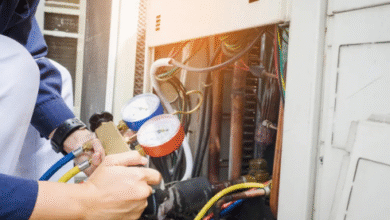
The Unseen Threat in Our Tap: Why PFAS Filtration Matters More Than Ever
If you’ve been keeping an eye on water quality news lately, you’ve probably seen the term “PFAS” pop up more than once. These so-called “forever chemicals” have crept their way into everything from non-stick pans to firefighting foam, and unfortunately, into our water supplies. They’re called “forever” for a reason—they don’t break down easily, if at all, in the environment. And once they make it into your body, they stick around far longer than anyone would like.
I still remember a friend telling me how she bought a lovely old farmhouse, only to discover later that the well water tested positive for PFAS. She was horrified. The idea of pouring her toddler a glass of water, knowing it contained chemicals linked to cancer, thyroid disease, and immune issues, was enough to make her lose sleep. Sadly, she’s far from alone. Communities across the U.S. are waking up to this invisible danger right in their kitchens.
Why PFAS Are So Hard to Get Rid Of
PFAS stands for per- and polyfluoroalkyl substances, a family of thousands of chemicals developed in the mid-20th century. They’re incredibly durable, which made them useful for products that resist heat, stains, and water. Great for manufacturing, terrible for health. Because of their durability, they slip past most traditional water treatment methods. Sand filtration? Nope. Standard chlorine disinfection? Doesn’t touch them. That’s where specialized PFAS water filtration comes into the picture.
Unlike contaminants you can smell or taste—like sulfur giving off that infamous rotten-egg smell—PFAS are sneakier. You don’t know they’re there unless you test for them. That invisibility adds to the anxiety. It’s not just about dirty-looking water; it’s about what you can’t see.
What Works (and What Doesn’t)
The good news is that researchers and water engineers have found solutions that actually work. Activated carbon filters, for instance, can capture PFAS molecules if they’re designed properly and maintained. Ion exchange resins are another solid option, basically trading out PFAS particles for safer ones. Then there’s high-pressure reverse osmosis, which physically forces water through a membrane so fine that even these stubborn chemicals can’t squeeze through.
The bad news? Not every product labeled “water filter” is equipped for this fight. Many basic pitchers or faucet attachments don’t cut it. You need equipment that’s been tested and certified for PFAS reduction. And since regulations are still catching up, it’s often on the consumer to dig through the fine print, ask tough questions, and sometimes spend a bit more for true peace of mind.
One friend of mine thought her regular carbon filter was doing the trick until she had her water retested. PFAS levels were basically the same. That’s when she switched to a reverse osmosis setup under her sink. A hassle? Sure. But when the results came back showing a dramatic drop, she said it felt like a weight off her shoulders.
The Human Side of Safe Water
There’s a tendency to reduce all this to science and stats—parts per trillion, lab results, government advisories. And those are crucial. But when you talk to families living with contaminated water, the human stories hit harder. Parents buying endless bottled water just so their kids can brush their teeth safely. Neighbors pooling money to install community filters because their town hasn’t caught up yet.
That’s why the push to remove PFAS from drinking water isn’t just a technical issue—it’s deeply personal. It’s about trust, safety, and the simple expectation that when you turn on your tap, the water won’t slowly harm you.
Choosing the Right Solutions
If you’re thinking about protecting your household, the starting point is getting your water tested. Many states now offer free or low-cost testing, especially if you live near a known contamination site. Once you know your levels, you can choose between point-of-use systems (like an under-sink filter for your kitchen) or whole-home setups that treat every drop coming into the house.
Here’s where it gets a little overwhelming. There’s no “one-size-fits-all” solution. Different systems work better for different PFAS types and concentrations. That’s why certified lab testing and product certifications are essential—otherwise, you’re just guessing. A quick online search will throw dozens of brands at you, all promising clean water, but only a handful have proven results.
The larger-scale answer, of course, involves municipalities stepping up. Industrial-grade PFAS treatment systems are being installed in some cities, using granular activated carbon or advanced membranes. But progress is patchy. Some towns have clean supplies today, while others are still handing out bottled water because their treatment plants haven’t been upgraded.
Looking Ahead
PFAS contamination isn’t a short-lived scare. These chemicals aren’t going anywhere fast, and even if companies stopped producing them tomorrow, the legacy pollution would still be with us. But that doesn’t mean we’re powerless. Each household filter, each town that invests in better infrastructure, and each push for stricter regulations is a step toward reclaiming safer water.
And maybe that’s the hopeful takeaway: change is happening. More states are passing laws setting strict PFAS limits. More manufacturers are being held accountable. And more people—parents, teachers, farmers, and everyday homeowners—are demanding better.
Final Thoughts
Water is so basic we often take it for granted, until something shakes that trust. PFAS has done exactly that. It’s forced us to reckon with the hidden costs of convenience products and the gaps in our water systems. But it’s also sparked innovation, awareness, and resilience.
So if you find yourself wondering whether your own water is safe, don’t shrug it off. Ask questions. Get a test. Explore filtration options that actually work. It’s not about paranoia—it’s about protecting your health and your family’s future. After all, clean water isn’t a luxury. It’s a right.



